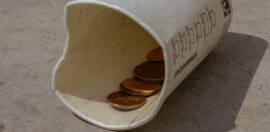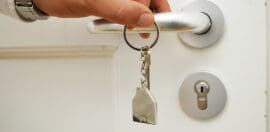Fall in rents not enough to address housing affordability crisis

15 December 2020 at 7:00 am
It’s clear from the Rental Affordability Index that JobSeeker recipients are suffering rental stress despite falling rents and an increase in the JobSeeker payment.
Around the world, COVID-19 has revealed many weaknesses in the systems we take for granted. While our health system is often the centre of discussion, in Australia the housing system has shown itself to be particularly vulnerable to major economic disruptions, especially for those on lower incomes or those who have experienced job losses as a result of the pandemic.
A report in early December highlighted just how dire the Australian affordable housing situation is for JobSeeker recipients.
The Rental Affordability Index has found that despite a doubling of the JobSeeker payment during COVID-19, not a single place in Australia was affordable for a JobSeeker recipient to rent. This was despite reductions in rent across areas such as Melbourne, Brisbane and Hobart.
The report, released by Bendigo Bank, National Shelter, SGS Economics & Planning and the Brotherhood of St. Laurence, revealed that 42 to 69 per cent of JobSeeker income was being spent on rent in every capital city – well above the 30 per cent threshold generally accepted as “affordable”.
The Rental Affordability Index measures the rate of rental stress – where an index of 100 and below indicates rental stress because a low-income household is spending 30 per cent or more of their income on housing. A figure between 100 and 150 indicates a household is not in rental stress but still faces unaffordable to moderately unaffordable rents. Scores above 150 indicate a household is able to access affordable rents.
At first glance, the situation for JobSeeker recipients appeared to improve. From March to June 2020, rents fell between two and seven per cent nationwide. The greatest falls in rental prices were in Greater Melbourne (-7 per cent), Greater Hobart (-6 per cent) and Greater Brisbane (-6 per cent).
In reality, though, when you dig underneath the figures to get a clearer picture, it’s clear that JobSeeker recipients are suffering rental stress despite this small improvement. The JobSeeker supplement has improved rental affordability for those households that were already on Newstart (approximately 689,000 recipients). However, despite this improvement, renting still remains unaffordable.
Rental affordability has also decreased substantially for most new JobSeeker recipients who lost their jobs (approximately 755,000 recipients). Rental stress has become so entrenched and severe for low-income households that the JobSeeker supplement has brought little relief – with the situation for most low-income households in these metropolitan areas remaining untenable.
Households suffering rental stress have to forgo other essentials to survive. This can include primary needs such as food, power, water, healthcare, medication, transport and education. This is a major problem and can at times spark a downward spiral that pushes people out of work and into a poverty trap. If they fall ill and cannot afford medical care, for example, they cannot go to work and may lose their job. If tenants get behind on bills such as power and rent, they can find themselves facing mounting legal demands with interest piling on. Or worse – an eviction notice from their residence, meaning they lose their housing security.
While renting can have benefits for some, others end up stuck in an unbreakable cycle, spending more of their income on housing than their home-owning counterparts. Nationally renters spend an average of 20 per cent of their income on housing, while owners with a mortgage pay 16 per cent.
The availability of social and affordable housing stock has fallen in the past decade and this is now being felt by more low-income Australians, more of whom are having to enter the private rental market where they find rents unaffordable. Of all low-income households across Australia, 44 per cent are in housing stress. This is unacceptable.
This is not easily solved but it certainly won’t be fixed – or even begin to be addressed – unless the entire community, including our policymakers and political leaders, shines a light on the issue and recognises the problem of housing affordability needs urgent attention.
There is a real opportunity to use the current recession to build a stronger future. With low interest rates, high unemployment and an increase of demand for affordable housing, this is the time to invest in social housing as the Victorian government has done. And at the same time, people can be brought back into jobs. An investment of about $7.8 billion would create 15,500 to 18,000 jobs over four years and add 30,000 dwellings to our social housing stock and refurbish aged stock.
Housing must be recognised as the human right and economic infrastructure it is.







